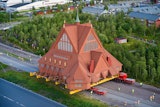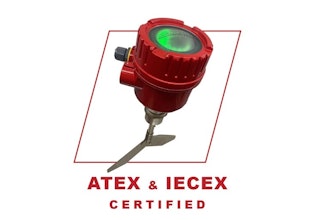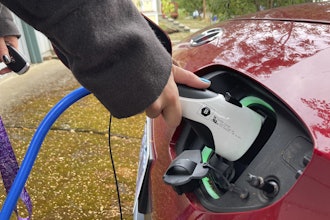For manufacturers setting up operations in Asia, there are myriad business details to consider – the physical plant, production equipment, government regulations, supply chain logistics and staffing, to name a few. But added to that list should be another important detail: employee safety and environmental practices.
The problem comes in knowing whose safety standards to follow when you venture past U.S. borders.
Manufacturers in the U.S. are acutely aware of Occupational Health and Safety standards and regulations, and how they impact every aspect of the manufacturing environment - from machine operation and personnel safety to health and environmental issues. But this has not always been the case in, say, the Asian manufacturing sector, where there has been a lack of safety standards and concern for environmental procedures.
This is starting to change, however, as more multinational companies open manufacturing facilities in Thailand, Korea, India and China, and adopt Western safety practices.
"There has been an increase in adherence to safety regulations in Asia in the past five to 10 years," said Kevin Nicolette, managing consultant for the Supply Chain Management Practice of The Revere Group, a provider of global business and IT solutions. "These countries have begun to implement OSHA-type regulations; many times using international labor organization standards as a guideline."
If a U.S. company wants investment dollars for foreign operations they have to prove to shareholders how they plan to run the business, Nicolette said. Many companies will do their own safety audits, or use an independent company to audit safety practices.
"These companies want to show that they adhere to a 'code-of-conduct' in relation to safety practices in their foreign operations," Nicolette said. "They want to be known as an employer that follows good labor practices, provides potable water to employees, and implements safety programs and procedures in the factory."
"Multinational companies will often adhere to local regulations or to the health and safety standards in their own country," said Erik Johnson, technical service representative at 3M Occupational Health and Safety Products Div., a manufacturer of safety, security and protection products. "These companies prefer to use the same or 'equivalent' safety products they use in their home country."
In some countries, such as China, environmental issues have taken precedence over worker safety. China has suffered from bad press because of a lack of concern for worker safety, and that has to change if China is to compete successfully in the global manufacturing market.
"In China, people are getting sick from drinking water that has been polluted with factory emissions, and Russia is complaining about air pollution coming from China's factories," said Nicolette. ''Although worker safety laws are becoming more important in China, environmental concerns get more publicity."
China does have a government environmental organization similar to the EPA in the U.S., but it does not have enough manpower to enforce the laws. China has similar problems with its worker safety laws, where the ability to enforce safety practices can leave workers in a precarious position.
China's Worker Safety Law, put in place a few months after the country joined the World Trade Organization in 2002, requires that companies have a safety department and safety management team, and that employees must have a certified amount of hours for safety training. Another agency, the State Administration for Worker Safety (SAWS), can actually suspend or shut down a manufacturing plant that is not adhering to safety practices.
"China wants more investment in their manufacturing segment, so safety enforcement is becoming more important to them," Nicolette said. "Foreign and state-owned companies are both vying for employees and global business, and good safety practices makes for a positive work environment."
U.S. manufacturers understand the importance of investing in safety training and providing safety equipment for their employees – "they understand that this investment pays off," said Nicolette. It is now occurring to many Chinese companies that providing health care benefits and safety supplies and training, and preventing occupational diseases, can lead to a more efficient workforce.
Conditions in many state-owned factories in China, though, are still poor. Workers do not wear protective clothing, gloves, face masks, or eye protection; air conditioning is mostly non-existent, and lighting is poor.
"Many Chinese workers are undereducated and do not have much knowledge of worker's rights," explained Nicolette, who said even the better educated employees do not understand the importance of worker safety issues.
"There is always a need for more education and training," 3M’s Johnson said. "One of the difficulties in determining the need for safety and environmental protection is the inability to afford instruments or laboratory analysis to quantify exposure levels."
But as more Chinese workers become aware of worker's rights, they are demanding safety equipment and training. In developing nations, employers then have to balance what is needed against what is affordable.
"A developing country will often start with simple safety products and strategies for reducing exposure to work hazards," said Johnson. "As they become more aware of health and safety needs and are able to afford more complex solutions, they will often ask for a wider range of solutions."
In 3M's experience, the best way to promote good safety practices in developing nations is through educating workers and organizations regarding occupational health and safety.
"This includes an awareness of both the hazards as well as the health effects," Johnson explained. "After this is understood, one can progress to selecting personal protective equipment. Finally, training must be conducted to ensure that the equipment is consistently used properly."
Johnson also suggests that companies serve on professional committees for the development of standards and help to educate government officials.



















